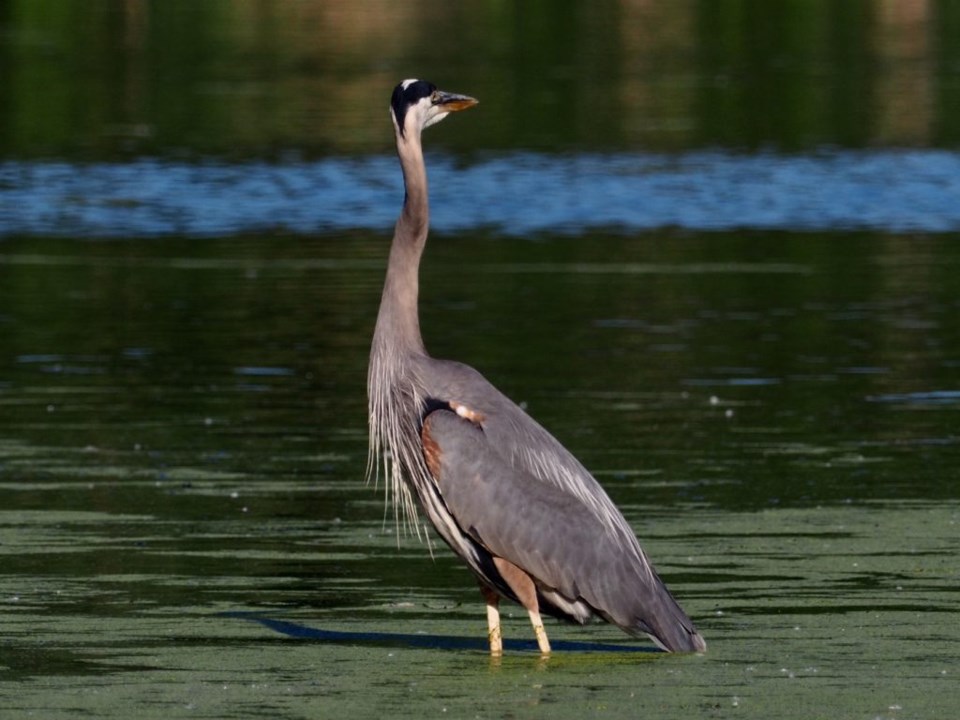
One of the more interesting bird species spotted in the wetland areas of the town has to be the great blue heron (Ardea herodias).
These birds, with an ungainly, almost prehistoric look, have a distinct presence as they are seen standing quietly or wading in the shallow water along the edges of waterways. The great blue heron is the largest heron in North America and is widespread. It stands almost a metre or more high, and an adult can weigh in at 2.5 kilograms. Its population appears to be in good shape, with the only threat being gradual loss of suitable habitat.
I recently spotted one in the Four Mile Pond area of the Niagara Shores Park and had the opportunity to take a few photos. I had seen one earlier, far across the pond and was able to get some wobbly video footage of it as it ‘walked’ in the water, almost giving the appearance that it was ice skating. Although I could see it had a fish in its mouth, it was too far for a good still photo. Last week, though, as I walked along the woodland path at the edge of the pond area, I spotted a large one standing in the now shallow waters. I approached it quietly to take a few photos. As it was quite early in the morning it was in the shaded area of the pond and the photos were, therefore, quite muted. Not wanting to disturb it, I continued to the beach area to walk along the shore.

As I returned to the pond area, I noticed that the heron had changed its location to a sunnier spot. I therefore began to creep closer along the path, once again hoping not to disturb it, and was successful at a few shots. It seemed aware of my presence, however, and did eventually take flight to land further away. A look at the photos reveals more about its appearance. The head, mostly white with a black stripe, is quite long and narrow, ending with an almost spearhead like beak. It has yellow beady eyes.The neck is quite long and often held in an S shape. This S shape is also seen when the heron flies. Its feathers appear mostly greyish and the ones at the front of the neck are quite long. Its body is the same greyish colour, with a touch of brown at the front of the wings. Two long legs allow it to stand above the water, and sometimes they can be seen resting on one leg.
Its build, high out of the water, allows it an ideal opportunity to watch quietly for passing prey. They are known to eat fish, frogs and turtles along the waterways that they frequent using that long beak to capture prey.
Approach carefully and you will be able to get a good look at these interesting birds in our neighbourhood.


